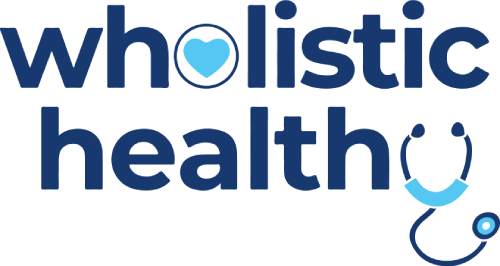Depression is a complex mental health condition that affects millions of people worldwide. It is characterized by persistent feelings of sadness, loss of interest or pleasure in activities, and a variety of physical and emotional symptoms. Understanding the different types of depression is crucial in order to better comprehend the nuances of this condition and provide appropriate treatment.
In this article, we will delve into the various types of depression, their impact on mental health, classification, causes and risk factors, as well as the diagnosis and treatment options available.
Understanding Depression: An Overview
The Impact of Depression on Mental Health
Depression can take a toll on a person’s mental health, affecting their thoughts, emotions, and overall well-being. It can lead to feelings of hopelessness, worthlessness, guilt, and self-blame. Individuals with depression may experience difficulties concentrating and making decisions. They may also have low energy levels, changes in appetite and sleep patterns, and a loss of interest in activities they previously enjoyed.
Moreover, depression can lead to a variety of psychological symptoms such as irritability, agitation, and anxiety. It may also increase the risk of developing other mental health disorders, such as anxiety disorders, substance abuse, or eating disorders. If left untreated, depression can significantly impair a person’s quality of life and increase the risk of self-harm and suicide.
Common Symptoms and Signs of Depression
Depression manifests differently in each individual, but there are a number of common symptoms and signs to watch out for. These include persistent feelings of sadness, emptiness, or a sense of hopelessness. Individuals may also experience a loss of interest or pleasure in activities they used to enjoy, as well as changes in appetite and weight. Sleeping problems, such as insomnia or oversleeping, are also common symptoms of depression.
Other possible symptoms include fatigue, difficulty concentrating or making decisions, feelings of worthlessness or excessive guilt, and recurring thoughts of death or suicide. It is important to note that not everyone with depression will experience all of these symptoms, and the severity may vary from person to person. If you suspect that you or someone you know may be experiencing depression, it is crucial to seek professional help for an accurate diagnosis and appropriate treatment.
The Classification of Depression
Major Depressive Disorder
Major Depressive Disorder (MDD), also known as clinical depression, is one of the most common types of depression. It is characterized by persistent feelings of sadness, loss of interest or pleasure, and a variety of other symptoms that significantly affect an individual’s ability to function on a daily basis. MDD can occur at any age and may be triggered by a combination of genetic, biological, environmental, and psychological factors.
Persistent Depressive Disorder
Persistent depressive disorder (PDD), also known as dysthymia, is a chronic form of depression that lasts for at least two years or longer. While the symptoms of PDD are generally less severe than those of MDD, they can still have a significant impact on a person’s overall well-being and functioning. Individuals with PDD may experience periods of relatively mild symptoms interspersed with occasional major depressive episodes.
Bipolar Disorder
Bipolar disorder, formerly known as manic depression, is characterized by extreme mood swings that alternate between episodes of depression and mania. During depressive episodes, individuals may experience the symptoms of major depression. However, during manic episodes, they may feel extremely elevated, energetic, and experience an increased sense of self-esteem and grandiosity.
Postpartum Depression
Postpartum depression occurs in women shortly after giving birth and is characterized by feelings of sadness, anxiety, and exhaustion. It is estimated that up to 20% of women experience postpartum depression, making it a relatively common condition. The hormonal changes that occur during pregnancy and after childbirth, as well as the physical and emotional demands of caring for a newborn, can contribute to the development of this type of depression.
Seasonal Affective Disorder
Seasonal affective disorder (SAD) is a type of depression that occurs in cycles and is related to changes in seasons. It is most commonly associated with the onset of winter and the reduction of natural sunlight. Individuals with SAD may experience symptoms of depression, including low energy levels, fatigue, and changes in sleep patterns and appetite, during certain times of the year.
The Causes and Risk Factors of Depression
Biological Factors
Biological factors play a significant role in the development of depression. Imbalances in brain chemicals, specifically serotonin and norepinephrine, can impact mood regulation. Additionally, changes in the structure and function of the brain, as well as genetic predisposition, can increase an individual’s susceptibility to depression.
Environmental Factors
Environmental factors can contribute to the development of depression. Experiencing a major life stressor, such as the loss of a loved one, divorce, or financial difficulties, can trigger depressive episodes. Other factors, such as a history of trauma or abuse, chronic medical conditions, substance abuse, or living in an unsupportive or stressful environment, can also increase the risk of developing depression.
Psychological and Personal Factors
Psychological and personal factors can also influence the development of depression. Individuals with low self-esteem, a negative outlook on life, or a tendency to be overly self-critical may be more susceptible to depression. Additionally, those with a history of other mental health disorders, such as anxiety or eating disorders, may be at a higher risk of developing depression.
Diagnosis and Treatment of Different Types of Depression
Diagnostic Criteria for Depression
The diagnosis of depression is typically made by a healthcare professional, such as a psychiatrist or psychologist, through a thorough evaluation of the individual’s symptoms, medical history, and family history. The Diagnostic and Statistical Manual of Mental Disorders (DSM-5) provides specific criteria to guide the diagnosis of depression and distinguish it from other mental health disorders.
According to the DSM-5, in order to be diagnosed with depression, an individual must experience at least five of the following symptoms for a continuous period of two weeks or longer: depressed mood, loss of interest or pleasure, significant weight loss or gain, insomnia or hypersomnia, psychomotor agitation or retardation, fatigue or loss of energy, feelings of worthlessness or excessive guilt, difficulty concentrating or making decisions, and recurrent thoughts of death or suicide.
Treatment Options for Depression
The treatment options for depression vary depending on the type, severity, and individual needs. In many cases, a combination of approaches is utilized to achieve the best outcomes.
- Medication: Antidepressant medications, such as selective serotonin reuptake inhibitors (SSRIs), serotonin-norepinephrine reuptake inhibitors (SNRIs), or tricyclic antidepressants (TCAs), are commonly prescribed to help regulate brain chemicals and alleviate depressive symptoms. It is important to note that medication should always be prescribed and monitored by a healthcare professional.
- Psychotherapy: Various forms of psychotherapy, including cognitive-behavioral therapy (CBT), ketamine infusion therapy, interpersonal therapy (IPT), and psychodynamic therapy, can be highly effective in treating depression. These approaches aim to help individuals identify and challenge negative thought patterns, develop coping strategies, improve communication and relationships, and address unresolved emotional issues.
- Hospitalization: In severe cases of depression where there is a risk of self-harm or suicide, hospitalization may be necessary to ensure the safety and well-being of the individual. In a hospital setting, comprehensive assessment and intensive treatment can be provided, including medication management, therapy, and a safe environment.
Other Interventions: In addition to medication and therapy, other interventions can also play a role in the treatment of depression. These may include lifestyle changes such as regular exercise, maintaining a healthy diet, and getting adequate sleep. Support groups, alternative therapies (such as acupuncture or yoga), and self-help strategies, such as practicing mindfulness or journaling, can also be beneficial in managing depressive symptoms.
In Conclusion
Depression is a complex mental health condition with various types, each having its own unique characteristics and treatment options. By understanding the different types of depression, their impact on mental health, and the factors that contribute to their development, individuals and healthcare professionals can work together to provide the most appropriate care and support.
If you suspect that you or someone you know may be experiencing depression, it is vital to seek professional help for an accurate diagnosis and to explore the various treatment options available. Remember, with the right treatment and support, it is possible to overcome depression and regain a sense of well-being and hope.
To learn about the depression treatment options we offer, contact Wholistic Health today to schedule a mental health consultation.

